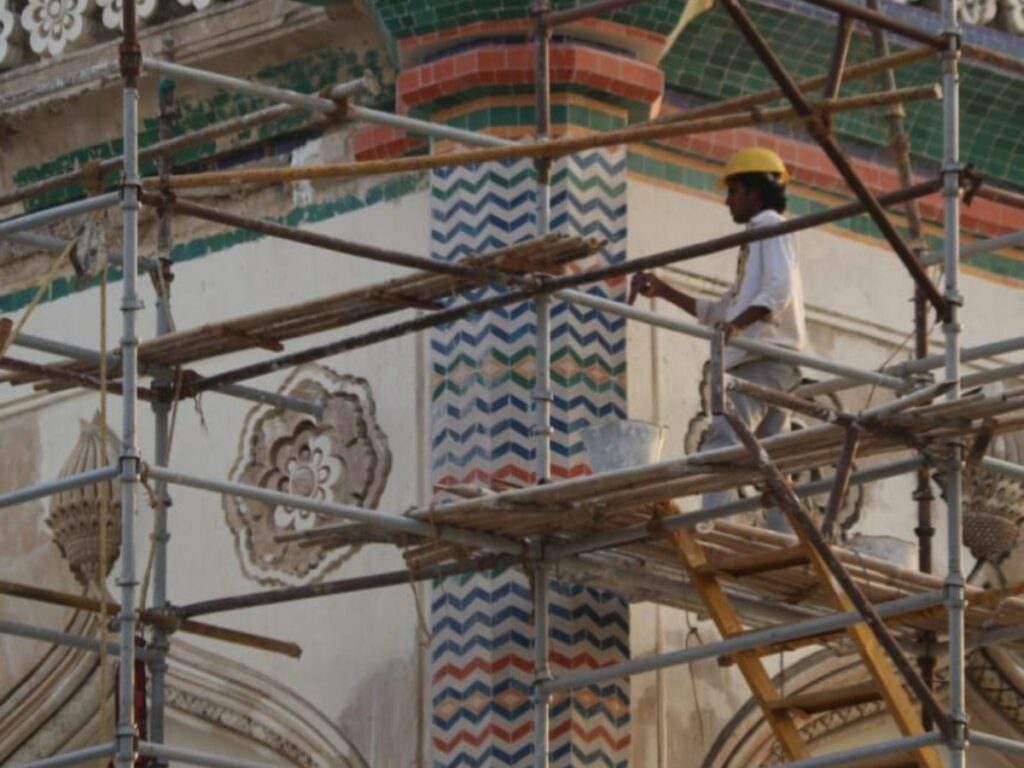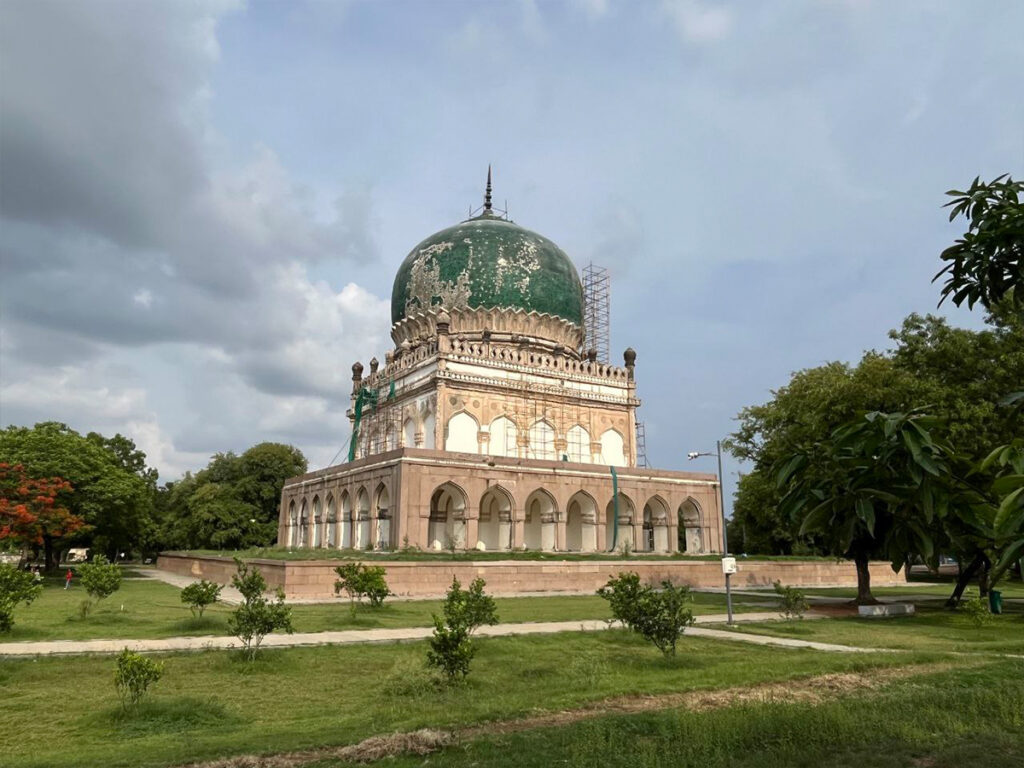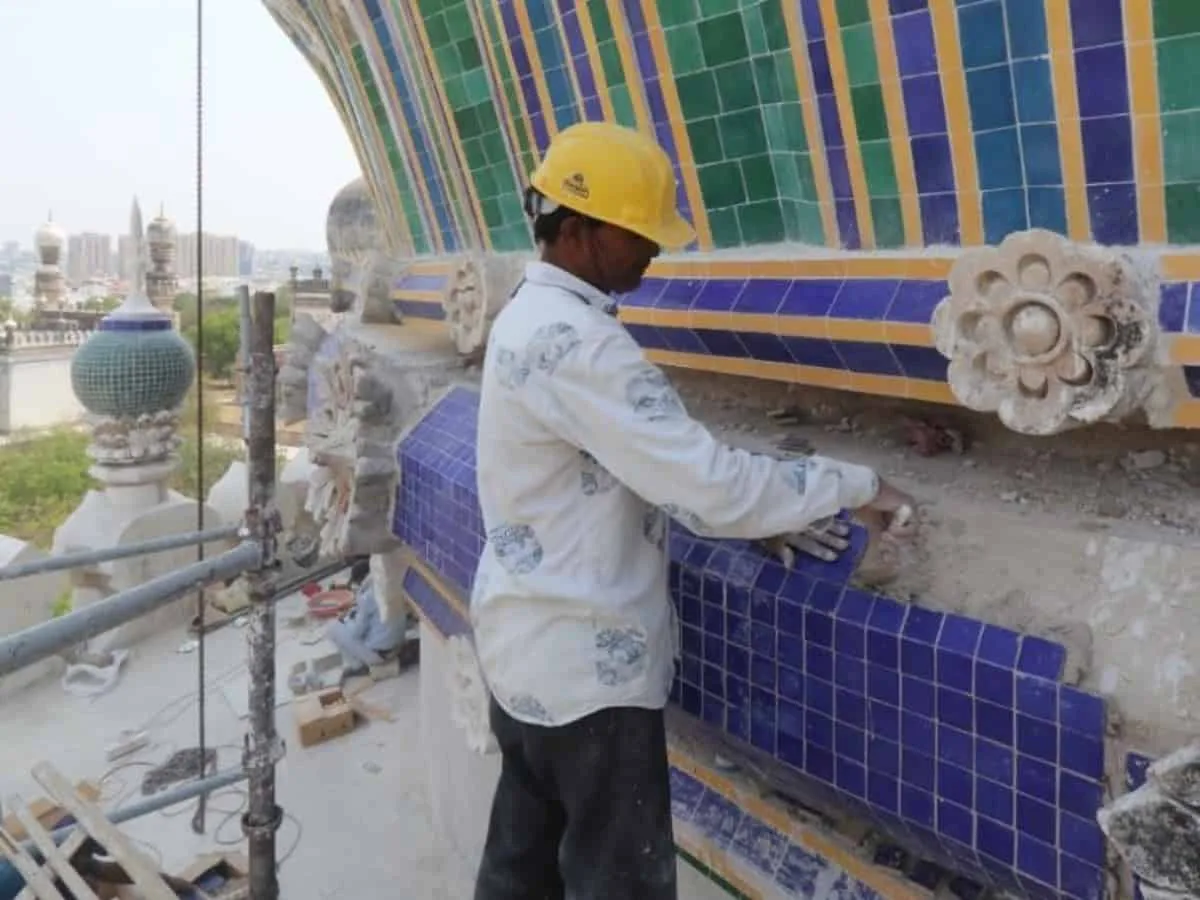Hyderabad: Though the Qutb Shahi Tombs complex by itself is an amazing heritage site, the tiled dome of Sultan Mohd Qutb Shah there is now slowly becoming the prized attraction for anyone who visits the incredible place. While green tiles on the dome are more prominent from afar, the painstaking completion of the tile work on it has revealed a stunning and colourful dome, the work on which is nearing completion.
The restoration of Sultan Muhammad Qutb Shah’s tomb is also a very important case in point to note with regard to ongoing conservation works or restoration of historic monuments in Hyderabad. Work at the Qutb Shahi Tombs also includes intricate stucco work in lime mortar on all the monuments, which has been carefully done by expert artists.
The glazed tiles on Sultan Muhammad Qutb Shah’s tomb is only icing on the cake, as the project has revived the artwork in a way. Over the last 10 years, AKTC architects and skilled workers have bit by bit restored the entire complex, which included a damaged stepwell (Badi Baoli), among other things.
The Qutb Shahi tombs complex, which is being restored by the Aga Khan Trust for Culture (AKTC), has close to 100 structures, which include tombs, a Hamam (Turkish bath), mosques, gardens and unmarked graves, apart from stepwells. It was historically connected to the Golconda fort, which was a walled-city before Hyderabad. The complex is the royal necropolis of the Qutb Shahi or Golconda dynasty (1518-1687), which once ruled from the Golconda fort, and later founded Hyderabad in 1591.

While green is the more dominant tilework on the tomb of Sultan Mohd Qutb Shah, the ongoing work has shown a total of six colours – Green, blue, turquoise, orange, yellow and white – that will be on the dome and other parts of the tomb. In total, the restoration of the tomb has required a staggering two lakh tiles for the monument.
Intense storms likely in Telangana; IMD Hyderabad issues yellow alert
Sultan Muhammad Qutb Shah was the fifth monarch of the Golconda or Qutb Shahi dynasty that founded Hyderabad. While the AKTC also found small patches of tileworks or broken tiles on other tombs such as that of his predecessor Mohammed Quli Qutb Shah (who was also Hyderabad’s founder), only the fifth king’s tomb has been restored fully with tiles due to the kind of fine work involved.

The official completion ceremony of the Qutb Shahi Tombs was held last year by the AKTC and the Telangana government. Work on the dome is likely to continue for another six or seven months.
Another tomb that has beautiful tilework is that of Sultan Ibrahim Qutb Shah (1550-80), the third of the Golconda kings. One side of the tomb reveals a pattern of the blue, green and yellow mosaic tiles that still remain on the monument. However, the AKTC will not be restoring the tile work in this case. The entire tombs complex over the years has seen a remarkable change, especially since its stepwells have also been restored fully.
History of Hyderabad, Golconda fort, Qutb Shahi Tombs
The Golconda Fort’s origins are traced back to the 14th century when the Rajah of Warangal Deo Rai (under the Kakatiya Kingdom which ruled from Warangal) built a mud fort. It was later taken over by the Bahmani Empire between 1358 and 1375. It was later developed into a full-fledged citadel by Sultan Quli who founded the Qutb Shahi kingdom in 1518 following the death of last sovereign Bahamani emperor Mahmud Shah Bahamani.
Sultan Quli was earlier a commander and later governor of Tilang (Telangana), under the Bahamani Empire (1347-1518), when its second capital was at Bidar. Sultan Quli, who was originally from Hamadan, rose to the level of Governor under the Bahamani empire. At this point of time he was given the fort, which he began developing into a walled-city. It eventually came to be called Golconda Fort (name derived from Telugu Golla-conda, or shepherds hill).
The Charminar is Hyderabad’s foundational monument. Built in 1591, it was constructed to mark the city’s establishment by Mohammed Quli Qutb Shah, the fourth ruler of the Qutb Shahi (or Golconda) dynasty. Prior to the Charminar being built, the Golconda fort was a walled city, from where the first three kings Qutb Shahi kings had ruled. The Qutb Shahi Tombs came up as a royal burial site for the dynasty. Moreover, aside from the royal family members, others from outside the family who were close to them are also buried in the complex.







